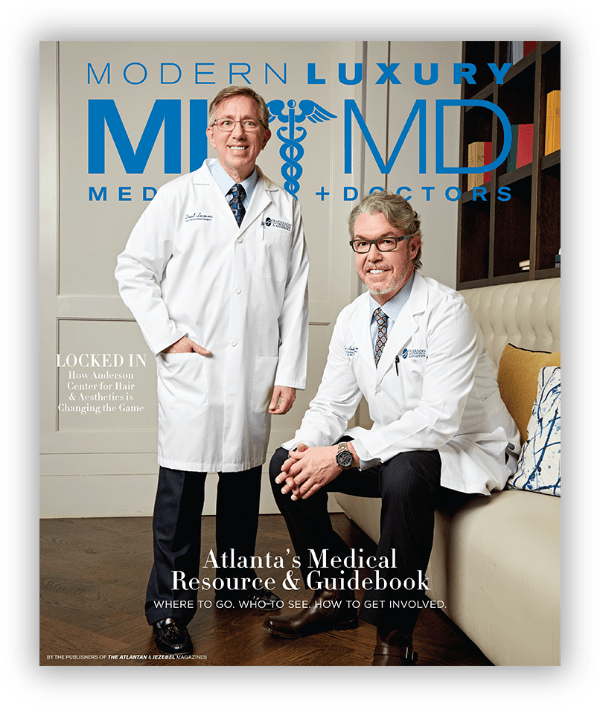By: Anderson Center for Hair
Share

It’s 2020, and we’re living in a modern world full of powerful technology. We have quantum-computing capabilities and the promise of high bandwidth brain-machine interfaces. And, in some ways just as important, an on-demand delivery app for just about anything you need. Given the scientific discoveries and innovations that we’ve had in just the last few years, a lot of people are taking technology for granted and growing accustomed to instant gratification. I’ve seen firsthand how this mentality has impacted the way patients set expectations about their hair. More often than not, patients are looking for a “silver bullet” that will take care of their hair loss. They want one magic solution, with no side effects or risks, that is going to solve their problem quickly, easily, and forever. But, you need an understanding of hair loss and reasonable expectations.
Setting Reasonable Expectations
Lots of guys assume that hair restoration surgery is the answer. However, there is no single answer. Don’t get me wrong, having more hair after a hair restoration procedure can have a positive impact on your life, but hair restoration isn’t only about having surgery. I’ve said it for years and I’ll keep saying it:
Consistent, ongoing maintenance after a hair restoration surgery is vital to achieving the desired cosmetic effect of your hair restoration surgery for as long as possible.
To be successful, it’s important that patients comprehend the progressive nature of hair loss and how it affects their results over time.
Without proper expectation setting, a worst-case scenario is a bit like this: a patient undergoes a hair restoration procedure, fails to act on any of the counseling provided about how to control his ongoing hair loss, and returns 18 months later dissatisfied because he looks the same as before his surgery. The surgically implanted hair looks great, but he’s lost more of the surrounding hairs. The hair restoration industry is full of patients who disregard maintenance and end up quite angry, wanting to know why they paid a substantial fee to “take care of the problem” only for it to continue.
What to Consider Before Surgery
The general public thinks of hair transplants like other forms of cosmetic plastic surgery, which I believe to be the source of some of the confusion. Luckily, I’ve found a method that helps patients understand their hair loss and sets reasonable expectations of the maintenance involved.
Let’s consider a rhinoplasty (commonly known as a “nose job”). A patient has a surgical procedure performed to remove a hump. Once removed, the nasal hump isn’t going to return. It’s not going to grow back, so there’s no need for continued maintenance after a rhinoplasty.
Understanding Hair Loss Analogy
Hair loss is more like dental decay. In fact, in many respects, the two phenomena are identical, with the main difference being that not everyone has hair loss, but everyone fights dental decay every day.
Both hair loss and dental decay:
- Have no known cure
- Are progressive in nature
- Are with you for life
- Require multiple avenues of non-surgical treatment to control effectively.
For dental decay, we do quite a bit of maintenance. We brush, floss, use mouthwash and go to the dentists’ offices twice a year for a dental cleaning. Some people are particularly careful about acidic or staining foods.
When treating hair loss, our maintenance options all have a parallel: the laser cap device (LLLT device) is like their “toothbrush,” topical treatments are their “dental floss,” and Platelet-rich Plasma (PRP) procedures can be likened to “dental cleanings.”
The analogy doesn’t stop there. When patients ask things like “when do I stop using the laser cap?” my answer is, “on the very same day you elect to stop brushing your teeth. But the dentist has the advantage in this case. If you let all your teeth rot out, they can give you implants or dentures made of porcelain. The parallel here is that your head has a limited amount of hair we can transplant. If you were to do no maintenance and you lose too much hair, your option then becomes a toupee.”
When patients ask me “what happens if I don’t see any changes, and no hair grows,” I point out “we brush our teeth all year long and everyone is happy when there’s zero change. And if you occasionally get a cavity, you wouldn’t throw away your toothbrush. You’d brush more carefully or more often.”
Next Steps
If you are still having understanding hair loss, how it affects you, and what you can do about it, we are here to answer all your questions.
Click here to schedule a consultation!






























